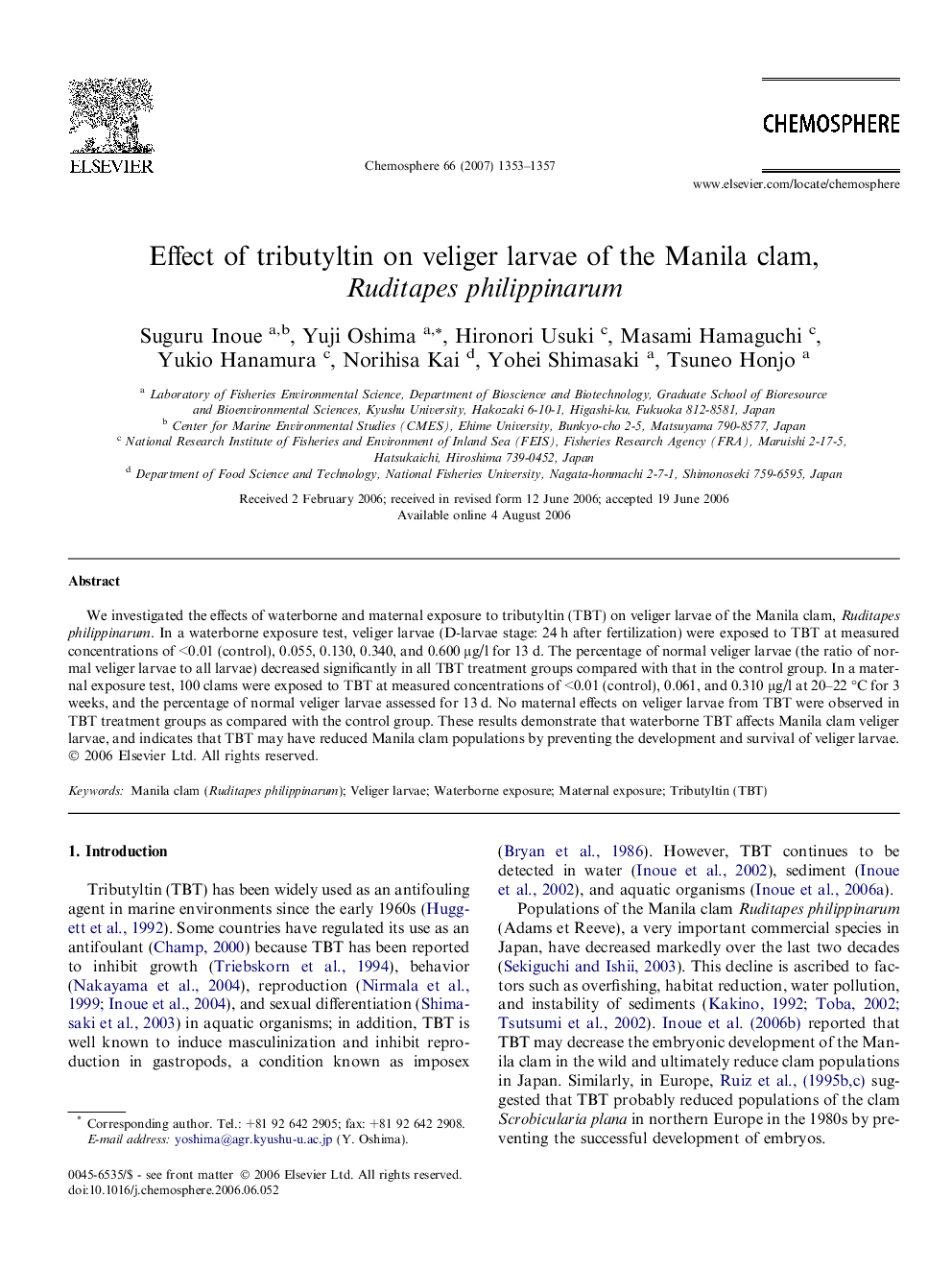| Article ID | Journal | Published Year | Pages | File Type |
|---|---|---|---|---|
| 4415310 | Chemosphere | 2007 | 5 Pages |
We investigated the effects of waterborne and maternal exposure to tributyltin (TBT) on veliger larvae of the Manila clam, Ruditapes philippinarum. In a waterborne exposure test, veliger larvae (D-larvae stage: 24 h after fertilization) were exposed to TBT at measured concentrations of <0.01 (control), 0.055, 0.130, 0.340, and 0.600 μg/l for 13 d. The percentage of normal veliger larvae (the ratio of normal veliger larvae to all larvae) decreased significantly in all TBT treatment groups compared with that in the control group. In a maternal exposure test, 100 clams were exposed to TBT at measured concentrations of <0.01 (control), 0.061, and 0.310 μg/l at 20–22 °C for 3 weeks, and the percentage of normal veliger larvae assessed for 13 d. No maternal effects on veliger larvae from TBT were observed in TBT treatment groups as compared with the control group. These results demonstrate that waterborne TBT affects Manila clam veliger larvae, and indicates that TBT may have reduced Manila clam populations by preventing the development and survival of veliger larvae.
